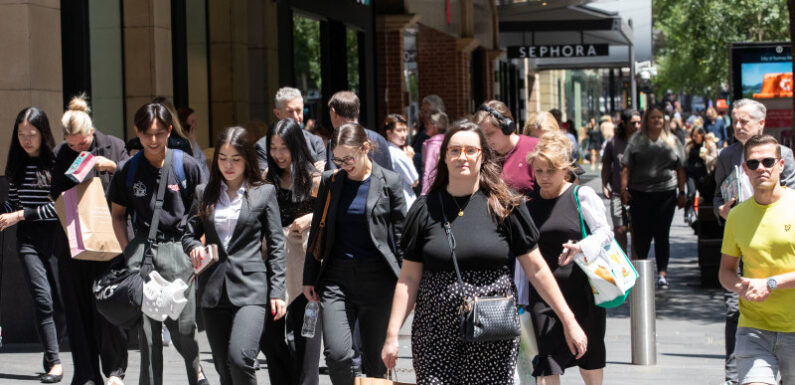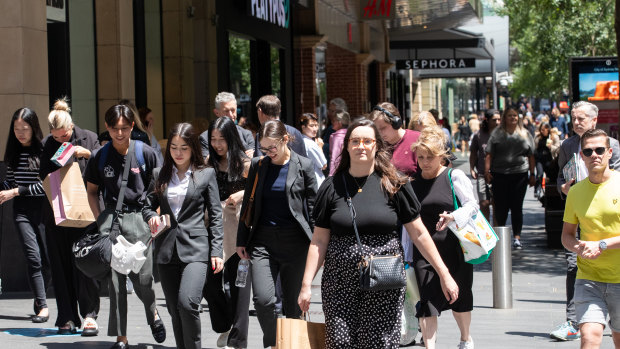
Save articles for later
Add articles to your saved list and come back to them any time.
There is growing evidence that the jobs market is starting to struggle under the weight of high interest rates despite new figures showing a small fall in unemployment.
On Thursday, the Australian Bureau of Statistics reported the country’s jobless rate declined by 0.1 of a percentage point in September to 3.6 per cent.
Full-time employment is starting to fall across the country as interest rates start to bite.Credit: Edwina Pickles
But the drop was driven by a much larger 0.3 of a percentage point fall in the participation rate, which measures the number of people in work or looking for it.
Without the fall in participation, the jobless rate would have increased.
Total employment grew by a modest 6700, driven by a 46,500 lift in part-time employment.
Full-time employment dropped by 39,900 in a sign of possible weakness across the entire jobs market.
Since June, total full-time employment has tumbled by 53,200 while part-time employment has jumped by 122,400.
At state level, NSW’s jobless rate fell by 0.2 of a percentage point to 3.3 per cent, but this was driven by a 0.4 of a percentage point drop in the state’s participation rate. The state has lost about 1000 full-time jobs since June.
Victoria’s jobless rate was steady at 3.3 per cent. Full-time employment in the state has fallen by 29,000 since June.
In Western Australia, unemployment fell half a percentage point to 3.3 per cent, but it was again driven by a collapse in participation, which slipped by 0.7 percentage points.
The bureau’s head of labour statistics, Kate Lamb, said there had been a 20,000 drop in the number of unemployed people during the month.
“It is important to remember that a fall in unemployment does not always mean much higher employment,” she said.
“The fall in the unemployment rate in September mainly reflected a higher proportion of people moving from being unemployed to not in the labour force.”
The Reserve Bank board next meets on Melbourne Cup Day. Thursday’s jobs figures and next week’s September-quarter consumer price index report will be key factors in its interest rate decision.
On Wednesday, bank governor Michele Bullock said it was evident that previous rate rises were starting to affect the economy but noted inflation for services such as hairdressers and takeaway meals remained “sticky”.
Cut through the noise of federal politics with news, views and expert analysis from Jacqueline Maley. Subscribers can sign up to our weekly Inside Politics newsletter here.
Most Viewed in Politics
From our partners
Source: Read Full Article
